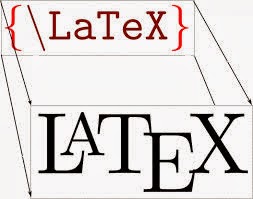What is good about Latex?
Why would anyone use Latex? Here are some good points:
- Superior typographic quality. The main reason I use Latex is it produces output that is, typographically, far better than any of the alternatives. Latex has excellent built-in fonts, good algorithms for automatic spacing and the ability to fine-tune the spacing arbitrarily. Bad typography gives a bad first impression and reflects poorly on the content of a document.
- Output device independence. MS Word has (what it is considered to be) a bug, where the formatting applied to a document depends on the printer designated as "current". Latex has no such misfeatures.
- Compatibility with revision control. Because .tex files are plain text, the revision control software can be used to remember the history of changes. Off-the-shelf revision control software has features that far exceed MS Word's built-in history mechanism.
- Portability. Latex runs on virtually any operating system in existence. MS Word only works on Windows, and even OpenOffice does not run on all Unixes (though that is improving).
- Document longevity. Latex documents written 10 years ago still work and still produce the same output as they did when originally written. In contrast, Microsoft uses version evolution as a strategic tool to force people to upgrade continuously, so MS Word documents are typically useful only for 3-4 years.
- Macros and other programmatic features. Latex lets can define define macros, canned sequences of text and/or markup, that can then be used repeatedly. It's much better than copy+paste since it can be changed by changing just the definition. Even more, Latex allows people to write programs in their documents, which is handy on occasion (mostly for people who already know how to write computer programs).
- Mathematical typesetting. Typesetting mathematics is why Tex was first created, and Latex continues to excel at this task.
If you are interested to LEARN and KNOW more about LaTeX, you can join our workshop.
The details of the workshops are as follow:
Course Title : One Day Workshop on Writing Thesis & Journal Paper with Ease using LaTeX
Date : 9th February 2014 (Sunday)
Time : 8:30 am – 5:30 pm
Venue : MPWS Training Centre, 63-1, 63-2, Jalan Kajang Impian 1/11,
Taman Kajang Impian, Seksyen 7, 43650 Bandar Baru Bangi, Selangor
Medium : English
Fee : RM 150 (normal rate) - payment before or by 27th January 2014
This
workshop is open to all researchers, academicians and postgraduate
students from government agencies, local and international higher
learning institutions, as well as private sector.





